No products in the cart.
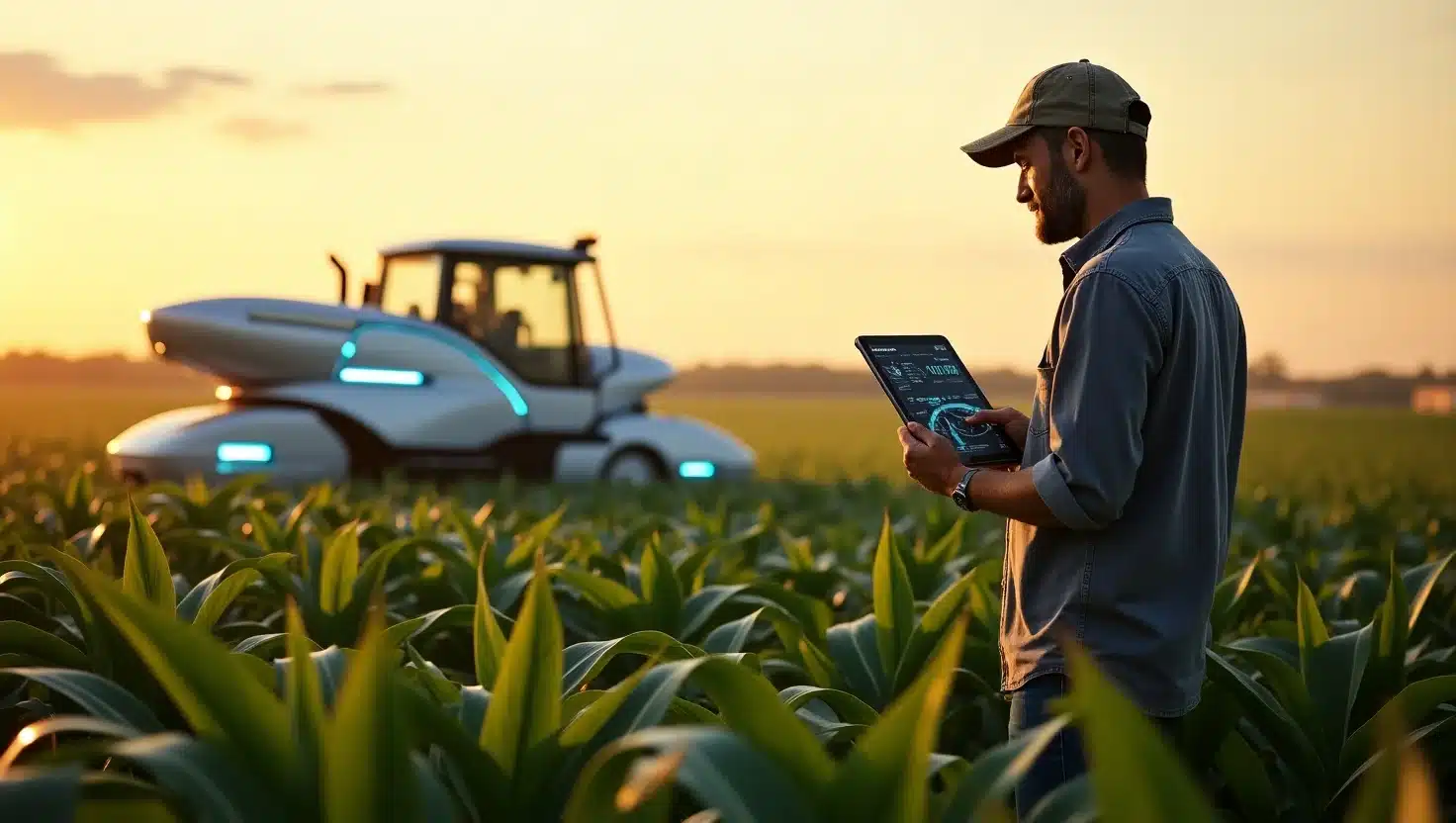
1. Introduction:
The agricultural sector is undergoing a remarkable transformation, driven by the rapid adoption of artificial intelligence (AI) technologies. Farmers worldwide are turning to smart tech to enhance crop management, reduce resource consumption, and boost yields. In a world where sustainable farming is more crucial than ever, integrating AI into crop management practices is proving to be a game-changer.
Despite the potential, traditional crop management methods still dominate many farms, often leading to inefficiencies and inconsistent yields. Manual monitoring of soil health, pest detection, and irrigation systems can be time-consuming and prone to human error. As climate change continues to challenge conventional farming practices, there’s an urgent need for more precise, data-driven approaches.
This is where AI steps in, revolutionizing agriculture by offering real-time monitoring, predictive analytics, and automated solutions that reduce labor and optimize productivity. Technologies like AI-powered drones, smart irrigation systems, and machine learning algorithms are helping farmers make more informed decisions. These innovations not only improve crop quality but also support sustainable farming practices, making agriculture more resilient in the face of environmental changes.
In this article, we will explore how AI in crop management is transforming modern agriculture. From predictive yield analytics to automated pest control, we will delve into the technologies that are shaping the future of farming. Additionally, we will examine real-world case studies and address the challenges farmers face when implementing AI solutions. Whether you’re a farmer looking to optimize your operations or an agriculture enthusiast, this comprehensive guide will provide valuable insights into the future of AI in crop management.
2. The Role of AI in Modern Crop Management
Artificial intelligence (AI) has emerged as a vital tool in modern crop management, offering precision and efficiency that traditional methods often lack. With global agriculture facing challenges such as unpredictable weather, soil degradation, and pest infestations, AI-driven solutions are providing farmers with the ability to make data-driven decisions that optimize productivity and sustainability.
One of the key applications of AI in crop management is predictive analytics. By analyzing historical data and real-time inputs from smart sensors, AI models can forecast crop yields with remarkable accuracy. This insight helps farmers make timely adjustments to planting schedules, irrigation practices, and pest management strategies, ultimately reducing crop loss and boosting output. Moreover, AI-powered soil analysis tools can monitor moisture levels, pH balance, and nutrient content, ensuring optimal soil health for better yields.
In addition to predictive insights, AI technologies are transforming crop monitoring. Drones equipped with computer vision can scan vast fields, identifying stress signs caused by pests, diseases, or nutrient deficiencies. This real-time data allows for targeted interventions, minimizing the use of pesticides and fertilizers. Furthermore, machine learning algorithms are being trained to recognize patterns in plant health, helping farmers detect issues before they become widespread problems.
The use of smart irrigation systems is another significant innovation driven by AI. These systems utilize data from weather forecasts and soil sensors to calculate the exact amount of water needed, preventing over-irrigation and conserving valuable resources. As water scarcity becomes a growing concern, such solutions are crucial for sustainable agriculture.
By integrating AI into crop management practices, farmers are not only enhancing their operational efficiency but also promoting environmental stewardship. As we explore the various smart technologies revolutionizing farming, it becomes evident that AI is not just an add-on but a fundamental part of modern agriculture.
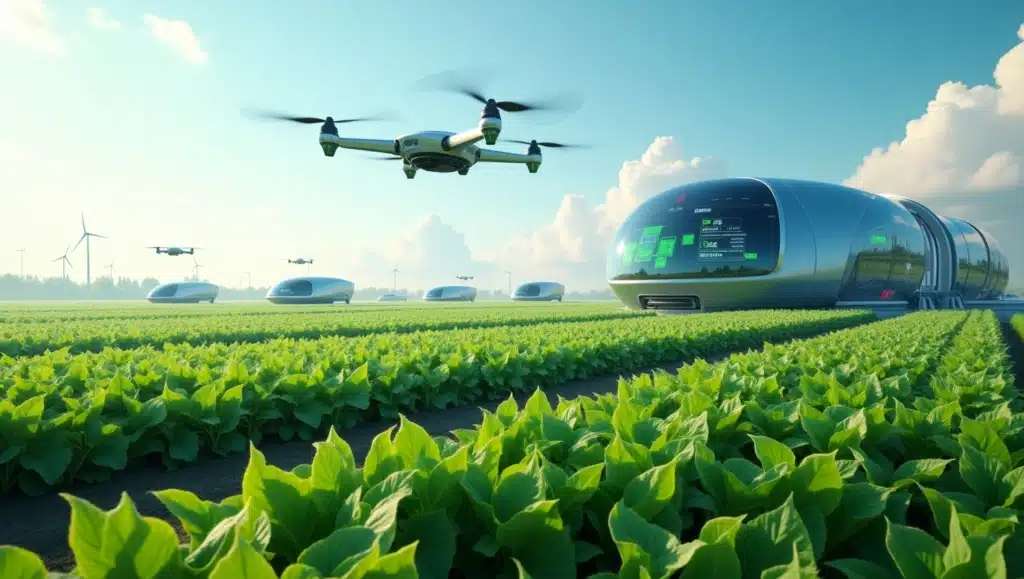
3. Smart Technologies Transforming Farming Practices
The integration of AI in agriculture has given rise to a range of smart technologies that significantly enhance crop management. These innovations are not just about automating traditional practices but redefining how farmers approach efficiency, precision, and sustainability. Let’s explore some of the key technologies making waves in the agricultural landscape.
a. AI-Powered Drones for Crop Monitoring
One of the most transformative technologies in modern farming is the use of AI-powered drones. These drones are equipped with multispectral and hyperspectral cameras, allowing them to monitor crop health from the sky. By capturing high-resolution images, they can detect variations in plant color and texture, which may indicate stress, disease, or pest infestation. Farmers can then receive actionable insights, enabling targeted treatment rather than blanket spraying, thereby reducing pesticide usage and costs.
b. Smart Irrigation Systems for Water Efficiency
Water management has always been a critical issue in agriculture. Smart irrigation systems leverage machine learning algorithms and real-time data from soil moisture sensors to optimize water use. By predicting when and how much water crops need, these systems ensure that resources are used efficiently. This not only conserves water but also prevents issues related to over-irrigation, such as root rot or nutrient leaching.
c. Machine Learning Models for Yield Prediction
Accurate yield prediction remains a significant challenge, especially with unpredictable weather patterns and changing soil conditions. Advanced machine learning models are trained on large datasets, including weather forecasts, soil quality indicators, and crop performance records. These models can predict yield outcomes with remarkable precision, helping farmers make proactive adjustments to their crop management strategies.
Integrating these smart technologies into farming practices is not just about boosting productivity; it also supports sustainable agriculture by minimizing waste and enhancing resource management. As the farming industry continues to evolve, AI-driven innovations will undoubtedly play a pivotal role in shaping the future of crop management.
4. Real-World Case Studies: Successful Implementations of AI
While the potential of AI in crop management is impressive, real-world applications demonstrate how these technologies make a tangible difference. Across the globe, farmers and agricultural companies are leveraging AI-driven solutions to enhance efficiency, optimize yields, and promote sustainable practices. Let’s look at some noteworthy case studies.
Case Study 1: AI-Powered Vineyard Management in California
In California’s wine-producing regions, vineyards face challenges related to water scarcity and pest control. To address these issues, farmers have implemented smart irrigation systems integrated with AI. These systems analyze soil moisture levels, weather patterns, and crop water requirements to deliver precise irrigation. As a result, water usage has decreased by 30%, while grape quality and yield have significantly improved. Additionally, AI-powered drones monitor the vineyards for signs of disease, allowing for early intervention and reduced chemical use.
Case Study 2: Data-Driven Farming in the Midwest Corn Belt
Corn growers in the Midwest are using predictive analytics to enhance crop planning and management. By utilizing machine learning algorithms, farmers can forecast yield variations based on soil health data, historical weather patterns, and crop genetics. These insights help them make more informed decisions regarding seed selection, fertilization, and irrigation schedules. The outcome has been an increase in productivity by up to 20%, alongside reduced input costs.
Case Study 3: Smart Pest Management in India
In India, pest infestations can devastate crops, causing financial strain on small-scale farmers. A collaborative project between agricultural experts and tech companies introduced AI-based pest detection systems that analyze real-time imagery from fields. These systems identify early signs of pest damage, allowing farmers to apply targeted biological treatments instead of broad-spectrum pesticides. This approach has lowered pest-related losses and enhanced crop quality.
These case studies illustrate that the adoption of AI-driven crop management solutions is not just a futuristic concept but a practical reality for farmers worldwide. By addressing specific challenges through smart technologies, the agricultural sector is moving towards more sustainable and productive practices.
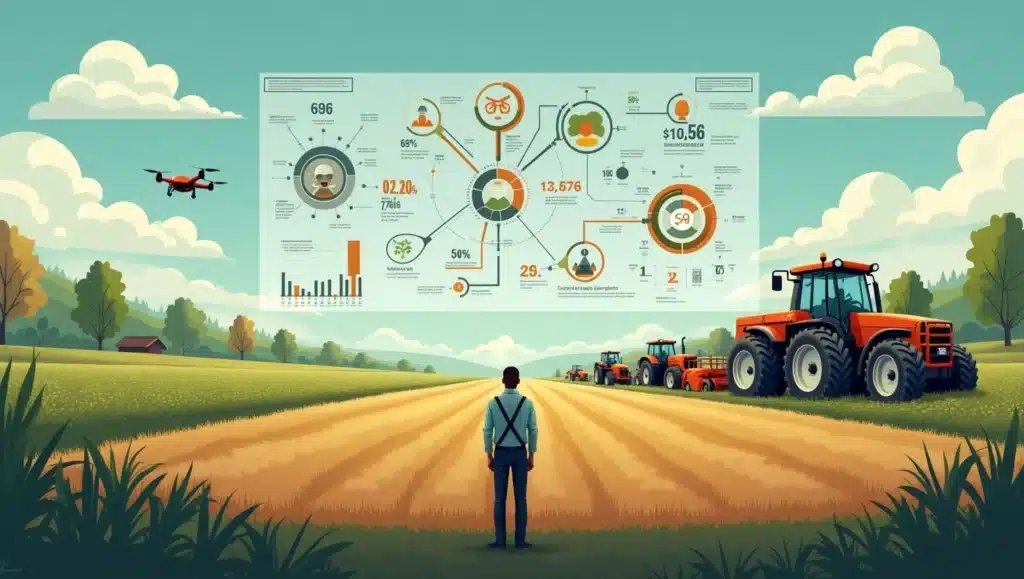
5. Challenges and Ethical Considerations
While AI-driven crop management offers numerous benefits, its adoption comes with challenges and ethical concerns that must be addressed. As more farmers integrate smart technologies into their practices, understanding these hurdles is essential to achieving sustainable and responsible agriculture.
1. Data Privacy and Ownership Issues
One of the primary challenges is the vast amount of data generated by AI-powered farming tools. Crop monitoring systems, soil analysis devices, and predictive algorithms continuously collect and analyze information related to soil health, yield potential, and climate conditions. However, farmers often lack control over this data, as it is typically stored and managed by technology providers. This raises questions about data privacy, ownership, and how the information might be used beyond its intended purpose. Farmers need transparent agreements to ensure that their data remains secure and under their control.
2. High Initial Costs and Technological Barriers
Although AI-driven solutions can optimize crop management, their adoption requires significant investment. The costs of acquiring AI-powered drones, smart irrigation systems, and advanced analytics software can be prohibitive, particularly for small-scale farmers. Additionally, limited technical expertise can make it challenging to maintain and troubleshoot these systems. Governments and agricultural organizations should offer subsidies and training programs to bridge this gap.
3. Bias and Accuracy in Predictive Models
Another critical issue is the potential bias in machine learning models. These models are trained on large datasets, but if the data lacks diversity or represents only specific farming conditions, the AI system may produce biased results. For example, a yield prediction model trained primarily on data from temperate regions may not perform well in tropical climates. To enhance accuracy, developers must ensure that training datasets encompass diverse agricultural environments.
4. Environmental and Social Impacts
Implementing AI in agriculture can inadvertently lead to environmental harm if not managed properly. For instance, automated irrigation systems that overestimate water needs could result in excessive water usage. Additionally, as AI systems replace manual tasks, there are concerns about job displacement in rural communities. Balancing technological advancement with social responsibility is crucial for long-term sustainability.
6. Conclusion and Call to Action
The transformative power of AI in crop management is undeniably reshaping modern agriculture. From predictive analytics that enhance yield forecasting to smart irrigation systems that conserve water, AI-driven technologies are helping farmers make more informed and efficient decisions. Real-world case studies from vineyards in California to cornfields in the Midwest demonstrate how adopting AI solutions can significantly boost productivity while promoting sustainable practices.
However, integrating AI into agriculture is not without its challenges. Data privacy, high implementation costs, potential model biases, and environmental concerns need to be addressed to ensure that these technologies benefit farmers of all scales. As the agricultural landscape evolves, it’s crucial to develop frameworks that support ethical AI practices and provide farmers with the necessary skills and resources to leverage these innovations effectively.
The future of farming lies at the intersection of technology and tradition. By embracing AI, farmers can tackle long-standing challenges and optimize crop management practices for better yields and resource efficiency. Yet, this transformation should be inclusive and sustainable, prioritizing the well-being of farming communities and the environment.
Call to Action:
For farmers and agricultural businesses looking to stay ahead, now is the time to explore AI-driven crop management solutions. Investing in smart technologies can significantly enhance operational efficiency and sustainability. Stay informed, adopt innovative practices, and be part of the AI-driven revolution in agriculture.
Subscribe to our newsletter to receive the latest insights on AI in farming and stay updated with cutting-edge agricultural innovations!
FAQs:
Q1. What are the key benefits of using AI in crop management?
AI technologies help farmers optimize crop management by providing data-driven insights into soil health, water usage, pest detection, and yield prediction. These benefits include improved crop yields, reduced resource consumption, better pest management, and more sustainable farming practices.
Q2. How does AI-powered irrigation work?
AI-powered irrigation systems use real-time data from soil sensors, weather forecasts, and crop water requirements to determine the optimal amount of water for crops. This ensures that water is used efficiently, preventing over-irrigation and conserving resources, which is especially important in regions facing water scarcity.
Q3. What challenges do farmers face when adopting AI in agriculture?
The main challenges include high initial costs of AI technologies, limited technical expertise, data privacy concerns, and potential biases in predictive models. Small-scale farmers may also find it difficult to access these technologies due to financial and infrastructure constraints.
Q4. Can AI replace traditional farming methods entirely?
While AI significantly enhances farming practices, it is unlikely to replace traditional methods entirely. Instead, AI complements traditional farming by automating repetitive tasks, improving decision-making, and increasing efficiency, allowing farmers to focus on other critical aspects of their operations.
Q5. Are AI-driven technologies suitable for small-scale farmers?
AI technologies are becoming more accessible, with many companies offering affordable, scalable solutions tailored to small-scale farmers. However, challenges such as cost, training, and data management remain. Governments and agricultural organizations can play a key role in supporting small-scale farmers by providing subsidies and educational resources on AI integration.
Related Articles
Crop Management
Can AI Predict Market Prices for Farmers? Here’s What You Need to Know
1. Introduction: Agricultural markets are notoriously unpredictable. One season, a bumper crop...
Crop Management
AI-Powered Crop Spraying Drones: Precision Agriculture in Action
1. Introduction: Farming has always been a race against time, pests, and...
Crop Management
Top AI Farming Startups in the U.S. to Watch in 2025
1. Introduction: Farming in the United States is undergoing a seismic shift,...
Crop Management
Top 5 Ways U.S. Farmers Are Using AI Drones to Boost Yields in 2025
1. Introduction: In 2025, the American agricultural landscape is undergoing a transformation...
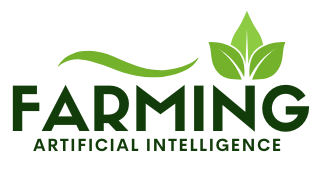
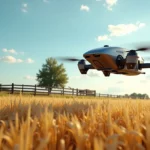
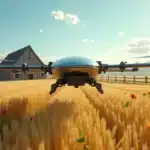
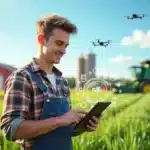



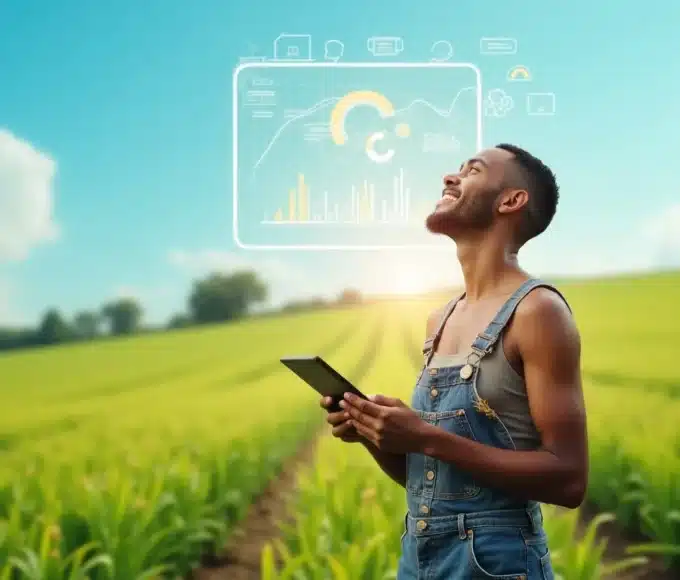
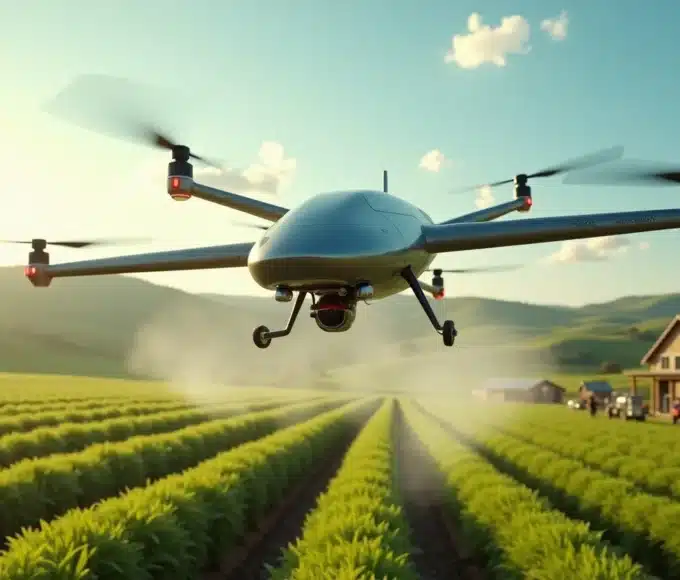
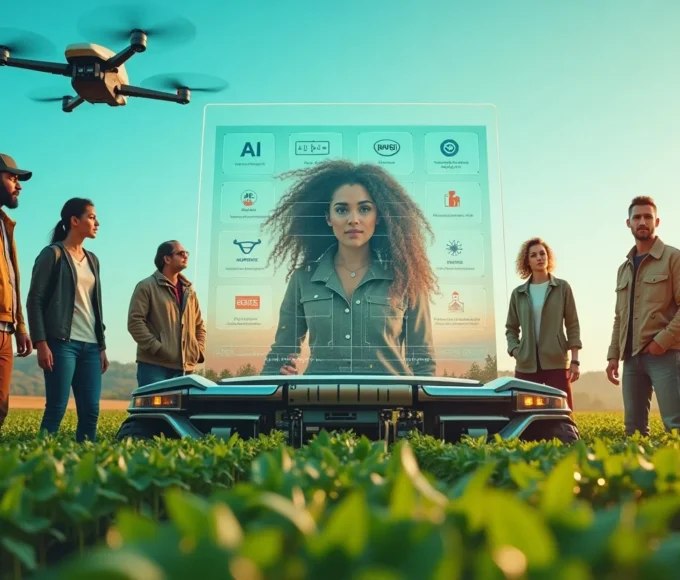

Leave a comment